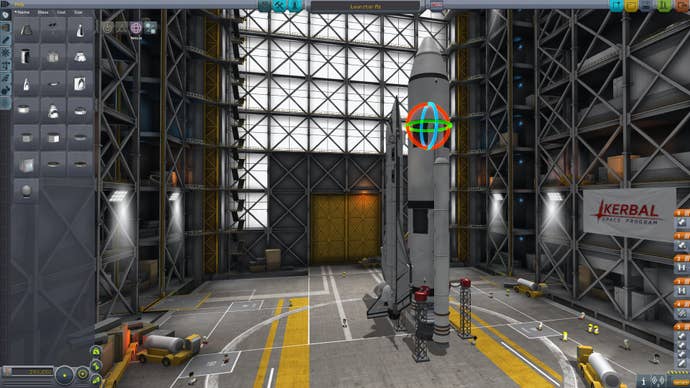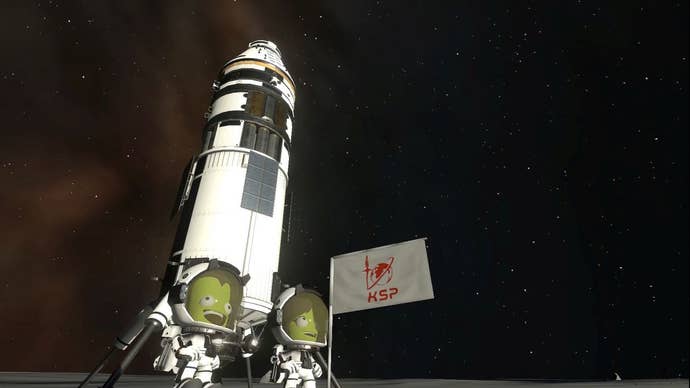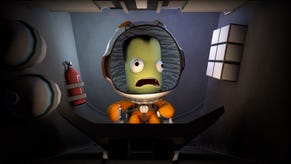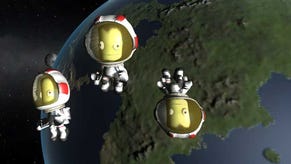Kerbal Space Program 2 Devs on Why Development Was Brought In-House
At PAX East 2020, we catch up with the developers at the newly formed studio behind Kerbal Space Program 2.
This article first appeared on USgamer, a partner publication of VG247. Some content, such as this article, has been migrated to VG247 for posterity after USgamer's closure - but it has not been edited or further vetted by the VG247 team.
Creating a sequel to Kerbal Space Program can seem daunting. The quirky 2011 space flight simulator found a balance between actual rocket science and hilarious accidents. According to publisher Private Division in August 2019, Kerbal Space Program has sold over 3.5 million units worldwide since its full release on PC in 2015.
Last week, Private Division announced that development of Kerbal Space Program 2 was moving to a new in-house studio in Seattle. So far, it's confirmed that studio head Jeremy Ables, Creative Director Nate Simpson, and Lead Producer Nate Robinson would all move from Star Theory to the new studio.
We sat down with Simpson and executive producer on the franchise Michael Cook at PAX East 2020 to discuss how the shift has affected the project.
"In the end, what we want, and what our players want, is for the absolute best version of Kerbal Space Program 2, highest quality game," says Cook. "Everybody was very excited at the announcement, and we want to deliver on the promise and expectations of players. [We're] determined that the best way to do that was to have an in-house development studio to make sure everybody was on the same page about getting out that product that we want to deliver to people."
When I ask Simpson about how the move has affected development of the project at the currently unnamed studio, he says it's been "unexpectedly smooth." It's pulled down communication barriers between the new studio and Squad, the studio currently working on the first Kerbal Space Program, allowing them to collaborate on development and help on things like part assets.
"Coming into frequent contact with the guys on [Squad] is probably, through osmosis, kind of bringing us into similar headspaces," Simpson says. "Obviously we've been in contact with those guys since the very beginning of the development of this project. We had passionate meetings about the pronunciation of the word 'Mun.' [laughs]"
Both declined to specifically comment on how staffing had changed in the move, though Simpson says that Kerbal fans would recognize some "familiar faces" in the team's feature updates.
Kerbal Space Program 2's expanding on the first Kerbal game by, among other things, exploring colony building. Establishing forward outposts and even new launch pads lets you establish permanent footholds in the vast vacuum of the universe.

As much as Kerbal is about rocket science and learning, it's also about failure. Hilarious, catastrophic failure. It's not uncommon for most players' first rockets to barely leave the launch pad, much less land on anything (on purpose, at least). Finding joy in those moments is still important moving forward into the sequel.
"Most people are looking for success when they play a game," Cook says. "We want people when they say, 'Ah, Kerbal Space Program, I'm not good at that,' we'd rather people say that with a smile."
Simpson takes it a step further, saying crashing is being good at that. "If you manage to get off the pad, you're on the way," he says. The learning process in Kerbal Space Program often happens through iterative failure, and the Kerbal Space Program 2 team celebrates failure.
To that end, Simpson says they have "fundamentally overhauled" the first-time player experience in Kerbal Space Program 2, to help teach seemingly tough concepts about rockets and space travel to newcomers. They've even been putting new team members through their "tutorial rigamarole" when they join, and he's optimistic about it. Visuals, especially, can make a big difference.
"It turns out, for example, that if I describe a gravity turn to you, that sounds complicated," Simpson says. "If I show what a gravity turn looks like, you get it in [snaps fingers] 10 seconds. 'Oh, that's what an orbit is.'"

Even multiplayer, a new feature for the series, is something Simpson hopes can facilitate the learning process. He tells me about the Kerbal community and how they've been generally helpful in the past. Multiplayer, Simpson believes, could be another way for veterans to escort first-time fliers into space.
"Kerbal players are helpful people," Simpson says. "They don't lord their special knowledge over one another. They just want more people to experience the joy that they've experienced playing the game."
There are a lot of massive new features planned for Kerbal Space Program 2: colonies, orbital stations, and even massive, almost-fantastical celestial bodies. There's a huge universe to explore, and the currently unnamed studio behind the new Kerbal wants more players to be less afraid of the great unknown.
"I think there's something beautiful at the center of this game that a lot of people have not been able to access in the original, because it does have that reputation as being a game for only the hardcore space people," Simpson says. "And I think we're gonna welcome a lot more people into the experience."





